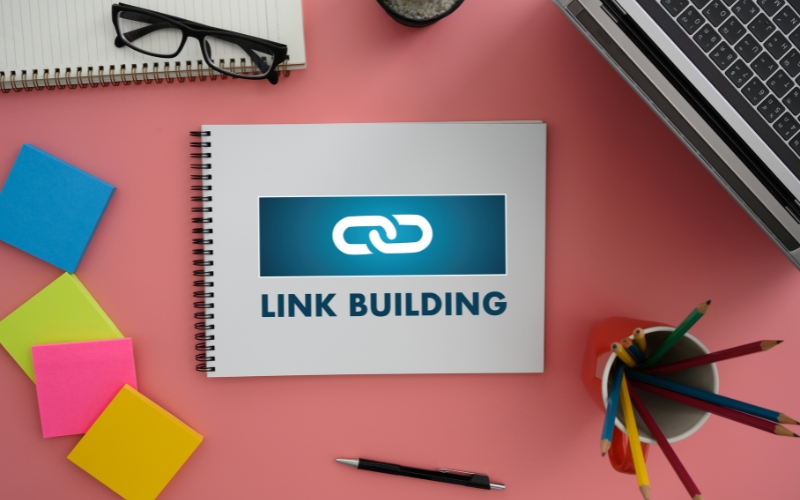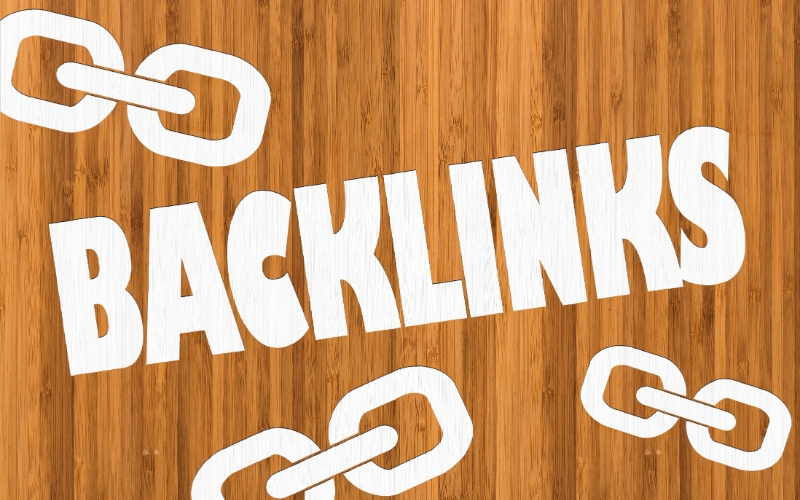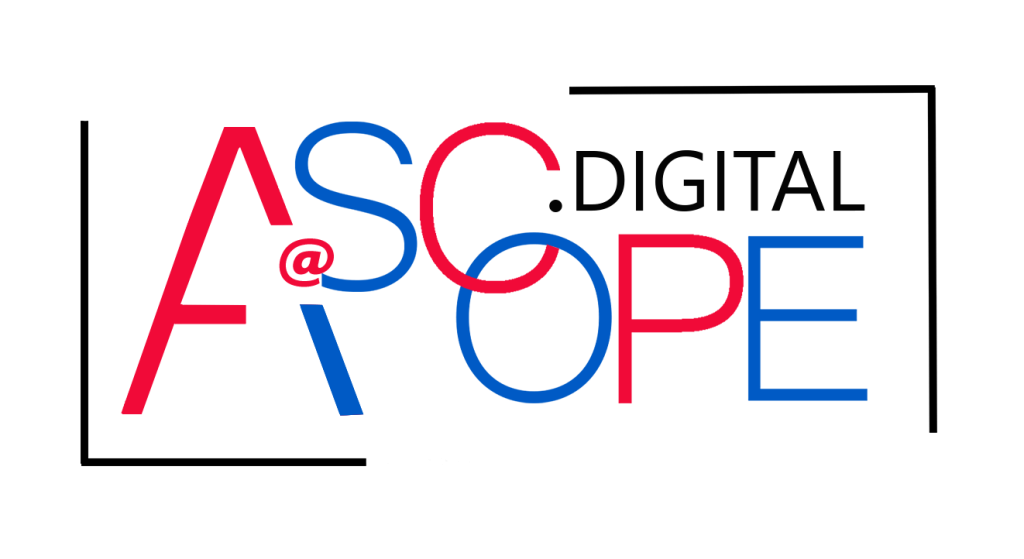
Backlinks have long been a cornerstone of SEO success, acting as a digital vote of confidence for your website. In simple terms, they are links from one website to another, and their importance in driving authority, visibility, and rankings cannot be overstated. In 2025, the focus has shifted toward implementing ethical and effective backlinking strategies to build trust with search engines and users alike. Understanding the fundamentals of backlinks and their evolving role is key to staying competitive in today’s dynamic digital landscape.
Understanding Backlinks: What Are They and Why Do They Matter?

Backlinks, also known as inbound or incoming links, are hyperlinks from one website to another. In the world of SEO, they play a pivotal role in signaling trust and authority to search engines. When a reputable site links to your content, it serves as a vote of confidence, indicating that your page holds value, relevance, or expertise on a given topic.
There are two primary types of backlinks: dofollow and nofollow. Dofollow links pass on “link juice,” or SEO equity, to the linked page, directly impacting its rankings on search engine results pages (SERPs). On the other hand, nofollow links do not pass link equity but still have value, as they can drive referral traffic and increase visibility.
The essence of backlinking strategies lies in building high-quality, relevant backlinks that enhance your website’s authority. Search engines like Google prioritize quality over quantity, rewarding websites that earn links from trusted, niche-relevant domains. Gone are the days when link farms and spammy techniques could fool algorithms; now, backlinks must come from reputable sources to make a significant impact.
Backlinking strategies must also consider the importance of contextual relevance. Links embedded within meaningful, topic-aligned content carry more weight than those randomly placed. For example, a link from a well-researched blog post on digital marketing will provide more SEO value to your site than a link from an unrelated forum.
Another critical aspect of understanding backlinks is how they affect search engine algorithms. Google’s ranking systems, such as PageRank, use backlinks as a key metric to determine a page’s authority. When your site accumulates backlinks from authoritative sources, it indicates to search engines that your content is credible, which can result in higher rankings.
Additionally, backlinking strategies can help build relationships and establish credibility in your industry. By earning links through guest posts, collaborations, or valuable content creation, you can foster connections that not only boost SEO but also drive referral traffic and increase brand awareness.
The Evolution of Backlinking: Trends Leading into 2025

Backlinking has evolved significantly over the years, with search engine algorithms becoming more sophisticated and user-centric. In 2025, backlinking strategies are no longer about quantity; they are about quality, relevance, and context. This shift is driven by the need for websites to provide genuine value to users while adhering to strict search engine guidelines.
In the early days of SEO, backlinks were viewed purely as votes of confidence. The more links a site had, the higher it would rank. However, this approach led to manipulative practices like link farms, paid links, and spammy exchanges. These tactics caused search engines, particularly Google, to roll out major algorithm updates, such as the Penguin Update, which penalized sites for unnatural or low-quality backlinks. These changes forced website owners to adopt ethical and effective backlinking strategies that focus on earning links through merit.
Fast forward to 2025, and the emphasis is on relevance and contextual linking. Search engines now prioritize links from authoritative and niche-relevant sources. For example, a backlink from a highly regarded technology blog to your software development website holds more value than one from a generic directory. This relevance not only boosts SEO but also improves the user experience, as visitors are directed to content that aligns with their interests.
Another trend shaping backlinking strategies in 2025 is the rise of content-driven link building. Creating high-quality, shareable content, such as detailed guides, infographics, and original research, has become a cornerstone of earning backlinks naturally. This approach aligns with Google’s E-A-T (Expertise, Authoritativeness, Trustworthiness) guidelines, ensuring that your site stands out as a credible source.
Algorithm updates continue to refine how backlinks are assessed. For instance, the Link Spam Update uses AI to identify and disregard spammy links, making it crucial for marketers to focus on authenticity. Tools like natural anchor texts and organic link placements play a significant role in modern backlinking strategies, ensuring compliance with these advanced algorithms.
Additionally, relationship-building and collaboration have become integral to link-building. Outreach to influencers, guest blogging on relevant platforms, and digital PR campaigns are now essential elements of successful backlinking strategies.
Key Benefits of Backlinking for SEO and Business Growth

Backlinking plays a crucial role in the success of any SEO campaign and directly contributes to the growth of a business. By understanding and leveraging backlinking strategies, businesses can improve their online presence, attract organic traffic, and establish authority within their industry.
One of the primary benefits of backlinking is its ability to drive organic traffic. When authoritative and relevant websites link to your content, it signals to search engines like Google that your page is credible and valuable. This boosts your rankings on search engine results pages (SERPs), making it easier for potential customers to find you. Effective backlinking strategies focus on securing links from high-traffic websites within your niche, ensuring not just better rankings but also more targeted and engaged visitors.
Another significant advantage is how backlinks influence domain authority (DA). Domain authority is a score that predicts how well a website will rank on search engines. High-quality backlinks from reputable sites act as votes of confidence, increasing your DA and improving your overall SEO performance. However, backlinking strategies must emphasize quality over quantity. A handful of links from respected sources is far more beneficial than dozens from low-quality websites.
Backlinking also enhances brand visibility and credibility. When your website is linked to by authoritative sites, it positions your brand as a trusted source of information. For example, if a well-regarded blog or news outlet links to your content, it not only boosts your SEO but also instills confidence in your target audience. This is why modern backlinking strategies include outreach efforts to collaborate with reputable blogs, industry leaders, and influencers.
Additionally, backlinks can help your business reach new audiences. When a popular website links to your content, its visitors are likely to click through, exposing your brand to a broader audience. This increases your chances of gaining loyal customers and amplifying your market reach.
Finally, well-executed backlinking strategies can provide long-term value. Unlike paid advertising, which stops driving traffic once the budget runs out, backlinks continue to generate traffic and SEO benefits over time, making them a cost-effective way to grow your business.
Strategies for Building High-Quality Backlinks in 2025

Building high-quality backlinks is a cornerstone of effective SEO, and as search engine algorithms evolve, so do the expectations for link-building practices. In 2025, businesses must implement backlinking strategies that prioritize authenticity, relevance, and long-term value. Here are some proven approaches to building impactful backlinks this year.
1. Leverage Guest Posting
Guest posting remains one of the most reliable backlinking strategies for gaining quality links from reputable websites. By contributing well-researched, valuable content to authoritative blogs in your niche, you can earn backlinks while showcasing your expertise. It’s essential to target platforms with high domain authority and a strong reputation, as these links carry more weight in search engine rankings.
2. Invest in Digital PR
Digital PR is another powerful method for building backlinks in 2025. By creating newsworthy content, such as industry reports, surveys, or unique case studies, you can attract the attention of journalists and influencers. These professionals often link to the original source when citing data or insights, providing you with high-quality backlinks from trusted websites.
3. Collaborate with Influencers
Influencer collaborations have become a key component of modern backlinking strategies. Partnering with influencers in your industry can help you secure backlinks through sponsored content, reviews, or mentions on their blogs or social media platforms. Ensure the influencers you work with have an engaged and relevant audience for maximum impact.
4. Focus on Niche-Relevant Links
The value of a backlink is significantly enhanced when it comes from a website within your niche. Contextual relevance is a critical ranking factor for search engines, so aim to secure links from websites that align with your industry or content. For instance, a backlink from a reputable tech blog will be more beneficial for a software company than one from a general directory.
5. Avoid Black-Hat Techniques
Ethical backlinking strategies are non-negotiable in 2025. Search engines have become adept at detecting manipulative practices like link buying or participating in private blog networks. These tactics can result in penalties or lower rankings. Instead, focus on building organic, value-driven backlinks through high-quality content and genuine relationships.
Measuring Backlink Success: Tools and Metrics to Track

Tracking and measuring the success of your backlinking strategies is crucial to optimizing your SEO efforts. While building high-quality backlinks is essential, evaluating their impact ensures that your strategies are both effective and sustainable. Here’s a comprehensive look at the tools and metrics you need to monitor and maintain a successful backlink profile in 2025.
1. Essential Tools for Backlink Analysis
Industry-leading tools like Ahrefs, SEMrush, and Moz are indispensable for analyzing backlinks. These platforms provide detailed insights into the number of backlinks, referring domains, and the quality of links pointing to your site. They also allow you to track competitor backlink profiles, offering valuable inspiration for your own backlinking strategies. For example, SEMrush’s “Backlink Audit” feature helps identify toxic links, while Ahrefs excels at uncovering lost or broken backlinks that can be restored.
2. Key Metrics to Monitor
When measuring backlink success, focus on the following metrics:
- Domain Authority (DA): This metric predicts a website’s ranking potential. High-quality backlinks from authoritative websites boost your domain authority and improve your rankings.
- Referring Domains: The number and diversity of referring domains indicate the strength of your backlink profile. Effective backlinking strategies prioritize links from unique and reputable domains.
- Anchor Text Distribution: The anchor text used in backlinks should be natural and relevant. Over-optimization or excessive use of exact-match keywords can trigger penalties.
- Traffic from Backlinks: Beyond rankings, backlinks should drive referral traffic. Use tools like Google Analytics to measure how much traffic each backlink generates.
3. Auditing and Disavowing Toxic Backlinks
Not all backlinks are beneficial. Low-quality or spammy links can harm your SEO performance. Regularly audit your backlink profile using tools like Moz or SEMrush to identify toxic links. These could include links from irrelevant, spammy, or penalized websites. If such links are affecting your performance, submit a disavow file to Google to prevent them from influencing your rankings.
4. Tracking ROI of Backlinking Strategies
Measuring the return on investment (ROI) of your backlinking strategies is essential. Analyze how your backlinks contribute to increased traffic, conversions, and rankings. This holistic approach ensures your strategies align with business goals.
Conclusion
To stay ahead in 2025, it’s essential to implement ethical and effective backlinking strategies that focus on quality and relevance. For instance, understanding how to create high-quality content that naturally attracts backlinks can be a game-changer. Websites like Moz’s Beginner’s Guide to Link Building offer invaluable insights into building a strong backlink profile while avoiding outdated or harmful practices. Leveraging such trusted resources can help you craft a sustainable strategy that aligns with modern SEO standards.
In the ever-changing world of SEO, mastering backlinking strategies is more important than ever. High-quality, relevant backlinks not only enhance your website’s authority and rankings but also foster stronger relationships with your audience and industry peers. By staying updated on trends, leveraging the right tools, and focusing on quality over quantity, you can ensure your backlinking efforts remain impactful. As you refine your strategies for 2025, remember that backlinks are not just about improving rankings—they are about building a credible and sustainable online presence.
For more details or to discuss your specific backlinking strategies, visit our Onsite SEO Services page.

